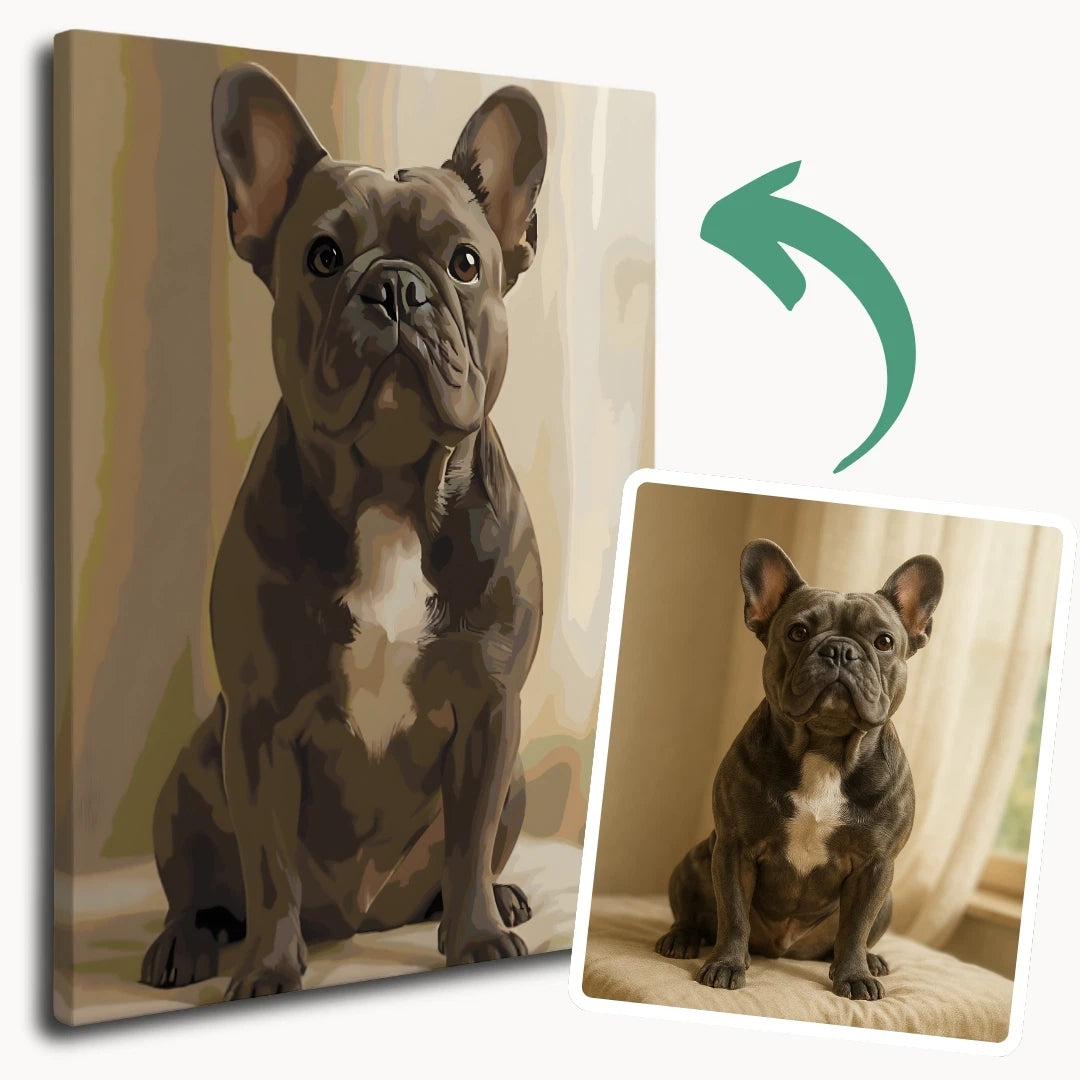Start with a light layer so that you always have space to go back and darken up a certain area.
- Start with a light layer so that you always have space to go back and darken up a certain area.
- Working from an outline, simply paint in the various sections of color by number. Keep your hand loose and relaxed as you paint with your brush. Don't grip the brush too hard or your hand will become sore after awhile.
- Set up your painting area so that it is comfortable for you to sit or stand while painting. A table top easel works very well for this. Make sure that whatever surface you are using is flat so that the canvas doesn't slip while you are working on it.

Do the lightest colour first.
You do not have to fill in every section. You can leave the numbers without paint and then return to those later. This helps you to fill in colours more slowly, which helps when it comes to shading. As you get used to the process, you will find your own way of painting by numbers. Many people say it is best if you start with the lighter colours first and then move on to darker ones as they are easier to cover up if mistakes are made.
Fill in large areas of color first, followed by smaller sections.
When it comes to painting by numbers, you want to start out with the more spacious areas of color before getting into the smaller sections. This is because these larger sections will be easier for you to paint, and it will give you a more complete picture.
This can be helpful if you're not a fast painter or if it takes time for you to see the finished image. You'll have an easier time staying focused on your artwork if you've got an idea of what it's going to look like when it's done.
Always start your painting in the middle and work your way out.
- Always start your painting in the middle and work your way out. Starting in the middle allows you to see where the center of the painting is located, which can help you position everything correctly as you paint.
- Start with the lightest colors first, then work on darker colors once you have all of the lighter ones covered up. This will prevent blotches of dark colors from making their way onto areas that should remain light, which can ruin your entire painting!
- Start with large areas of color first before working on smaller ones; this will make it easier for you to get a feel for how things are going and know where else needs attention if there are any mistakes made along the way!
- Make sure to use enough paint; but don't use too much either because then it will be hard for everything else around them (like other colors). Using just enough makes things look good without being too messy or difficult!
Use a paintbrush for every color no matter how similar they might be.
It's tempting to use one brush for multiple colors, especially if they're similar shades. However, you should always use a new brush for every color to prevent unwanted mixing. This will give you cleaner and more vibrant results. When changing colors, rinse your brush with water thoroughly to avoid further contamination.
Use high-quality kits like the Paris Travel Poster Kit to make coloring easier and more enjoyable.”
Place a cloth under your canvas when you are painting so you don't ruin whatever surface you're working on.
Let's start with this one:
Place a cloth under your canvas when you are painting so you don't ruin whatever surface you're working on. There are two reasons for this. First, it will protect your table or floor from paint (and paint stains). Second, it will avoid smudging your work if you accidentally bump the canvas while you are painting.
The options here are many: use a plastic or paper tablecloth (the cheapest option), an old newspaper or magazine lying around the house, an old curtain or blanket that's destined for the bin anyway, even a towel from the bathroom might be enough to do the job! You can also use this cloth to clean off any paint that does end up spilling and try not to get too nervous about making mistakes at first!
Keep these things in mind before starting your paint by numbers picture
- Make sure your brushes are clean
- Paint mixed properly
- Use a wet cloth to blend colors together
- The right paint for the right surface
- Clean up as you go













